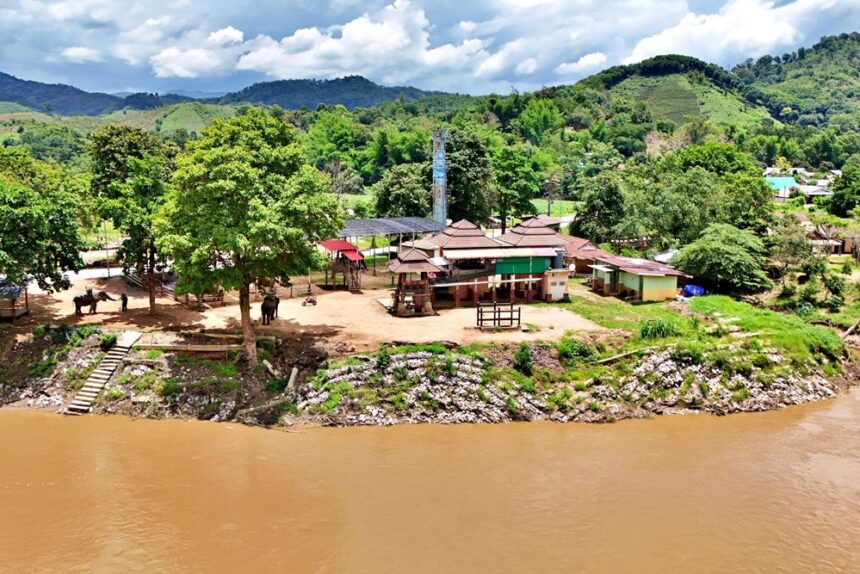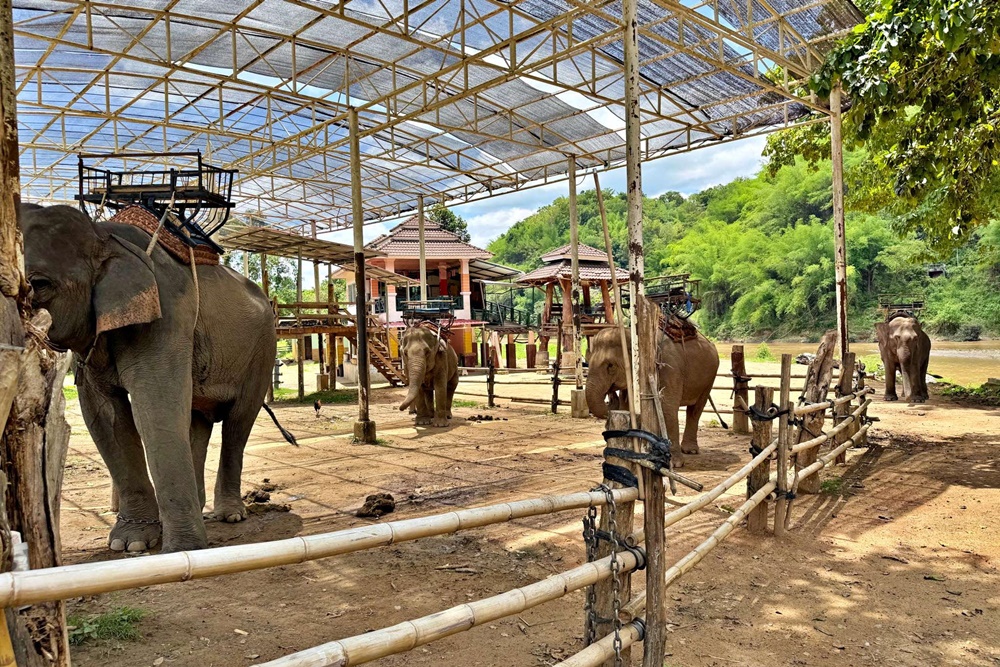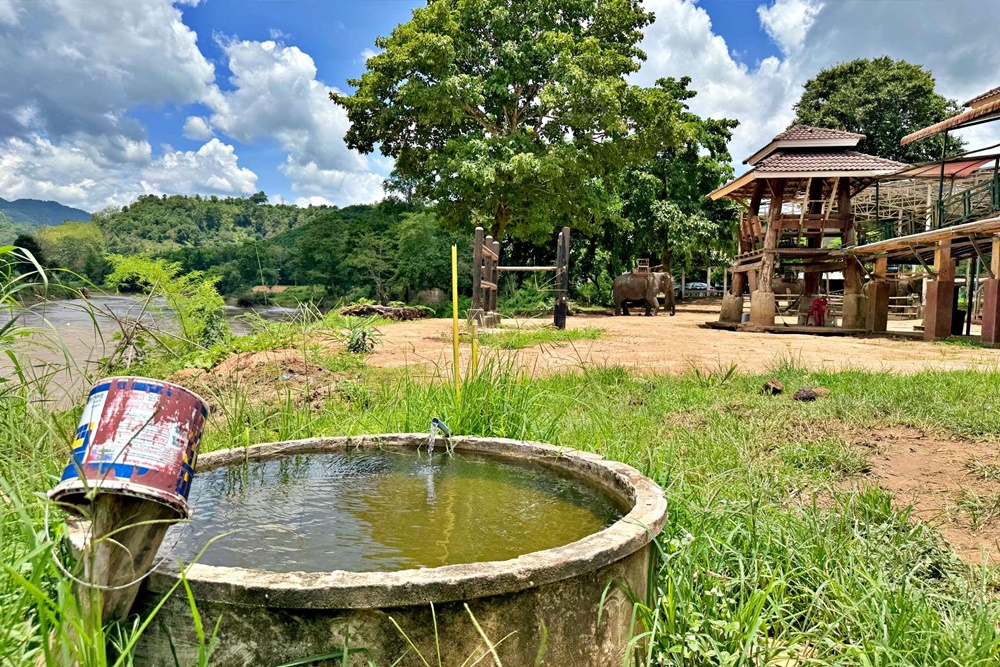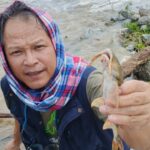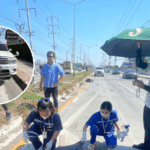CHIANG RAI – Residents in Ruammitr village, located by the Kok River in Mae Yao subdistrict, Chiang Rai, are facing growing concerns after high levels of arsenic were detected in the river.
The water appeared muddy and polluted, especially compared to nearby streams that stayed clear. Local authorities installed signs to warn people about the contamination and shared safety guidelines, urging everyone to avoid direct contact with the river and not to consume fish from it.
Sihton Kamphaeng, a Ruammitr villager and manager of a local elephant camp, explained how tourism has collapsed. More than 80% of tourists cancelled their bookings after hearing about arsenic in the river.
Elephant rides and rafting activities stopped as people worried about health risks. The camp now has only nine elephants left, but the income isn’t enough to cover costs.
Since the problem started, elephants have not been allowed in the river. Instead, the camp switched to using mountain tap water, but that source is limited. Elephants can now only drink about half their usual amount, taking turns at a holding tank.
The camp recently installed a four-kilometre pipeline to access more clean water. In April, elephants bathed in the Kok River and developed rashes and blisters within days. Their handlers also suffered skin infections. Both animals and humans are still recovering, with scabs from the infections.
Sihton added that locals in Ruammitr and Pa Sert villages worry the arsenic could seep into their shallow wells, which provide water for household use. They have called on authorities to check water quality and restore confidence in the safety of their water.
Further downstream in Pa O Maeyao village, people have stopped fishing in the Kok River for more than two months. Before the contamination, fishing was the main source of income for many. Jinda Inkham, a resident, said she has had to find other work to support her family because no one wants to buy fish from the river. Concerns about arsenic have made both catching and selling fish impossible.
Businesses along the river, including food stalls and shops that used to cater to tourists during the summer, have also suffered. Some owners spent over one hundred thousand baht renovating their shops, only to close due to the lack of visitors.
The Kok River remains much muddier than in previous years, when it was typically clear and popular for water activities. Locals are asking the government to test the water and address the contamination quickly. They hope for a solution that will restore confidence and help the community recover.
Ni-wat Roykaew, president of the Rak Chiang Khong group and director of the Local Knowledge Institute, has invited interested residents to join a public meeting on 5 June 2025. The event will be held at Suan Tung and Lantern Park on Thanlai Road in Chiang Rai.
It aims to update the public on the issue, discuss the causes of the contamination, and encourage people to join a larger event scheduled for 5 June near the provincial hall by the Kok River.
Ni-wat also encouraged locals to tie green ribbons to their vehicles and homes as a show of solidarity and to urge action from the government. At the 5 June event, participants will hold signs, visit exhibitions, and take part in traditional blessing ceremonies for the river.
The group will also submit letters to Thai authorities, as well as Chinese and Myanmar embassies, to seek support in finding practical solutions. The Thai and Myanmar regional border committee plans to meet in July, where they will discuss the impact of mining activities upstream in Shan State, Myanmar, and work towards a joint response.




